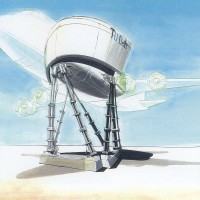Quantitative and objective evaluation of the effect of degraded simulator motion cueing fidelity on pilot control behavior.
Finding a proper method or metric for evaluating simulator motion cueing fidelity is something that simulator manufacturers, engineers, and legislators still struggle with, even after decades of experience in ground-based simulation. From 2006 to 2012, a large research project has ran at the Control & Simulation Division at Delft University of Technology, which aimed to develop a novel objective method for the assessment of flight simulator motion fidelity.
This proposed method involved the capturing of pilots’ responses to visual and (simulator) motion cues during manual tracking tasks using multimodal pilot models, to obtain quantitative measurements of pilots’ usage of motion information and increased understanding of how these different modalities interact during manual aircraft control. Furthermore, an attempt was made to quantify the behavioral discrepancies that may occur in flight simulators compared to real flight, and to relate these observed discrepancies to the choices in the presentation of simulator motion cues.
In this project pilot tracking behavior was found to be strongly affected by degraded simulator motion fidelity. With simulator motion cues that are increasingly attenuated compared to the 1-to-1 case, pilots are seen to rely increasingly less on the presented motion information, reverting to a more visual-based control strategy. Even though these results are very important in that they show adaptation of pilot low-level control behavior to bad simulator cueing, still some work remains to be done before the conclusions from this work can be applied for true behavior-based optimization of simulator motion cueing in both aircraft and automotive simulation.



